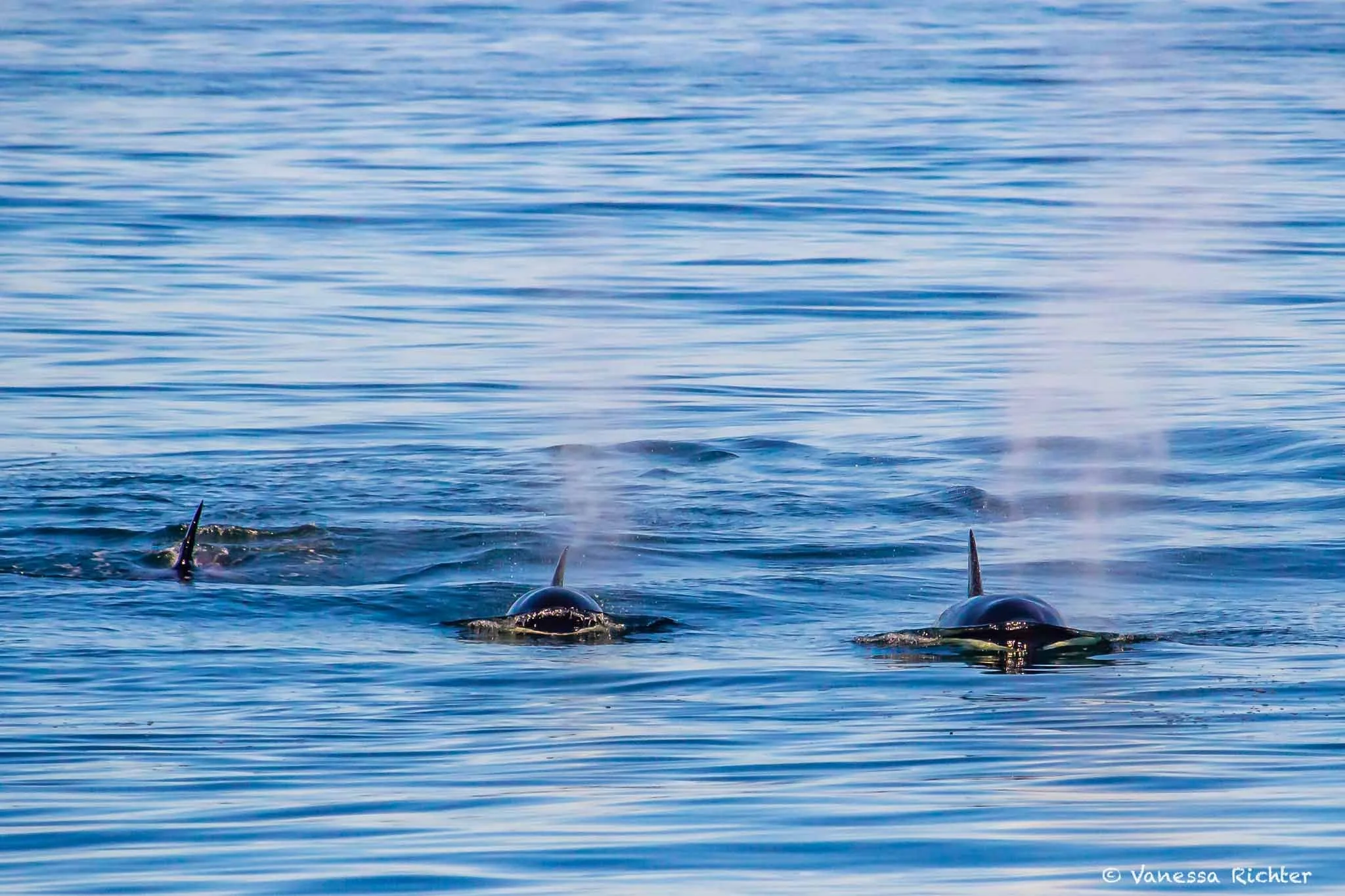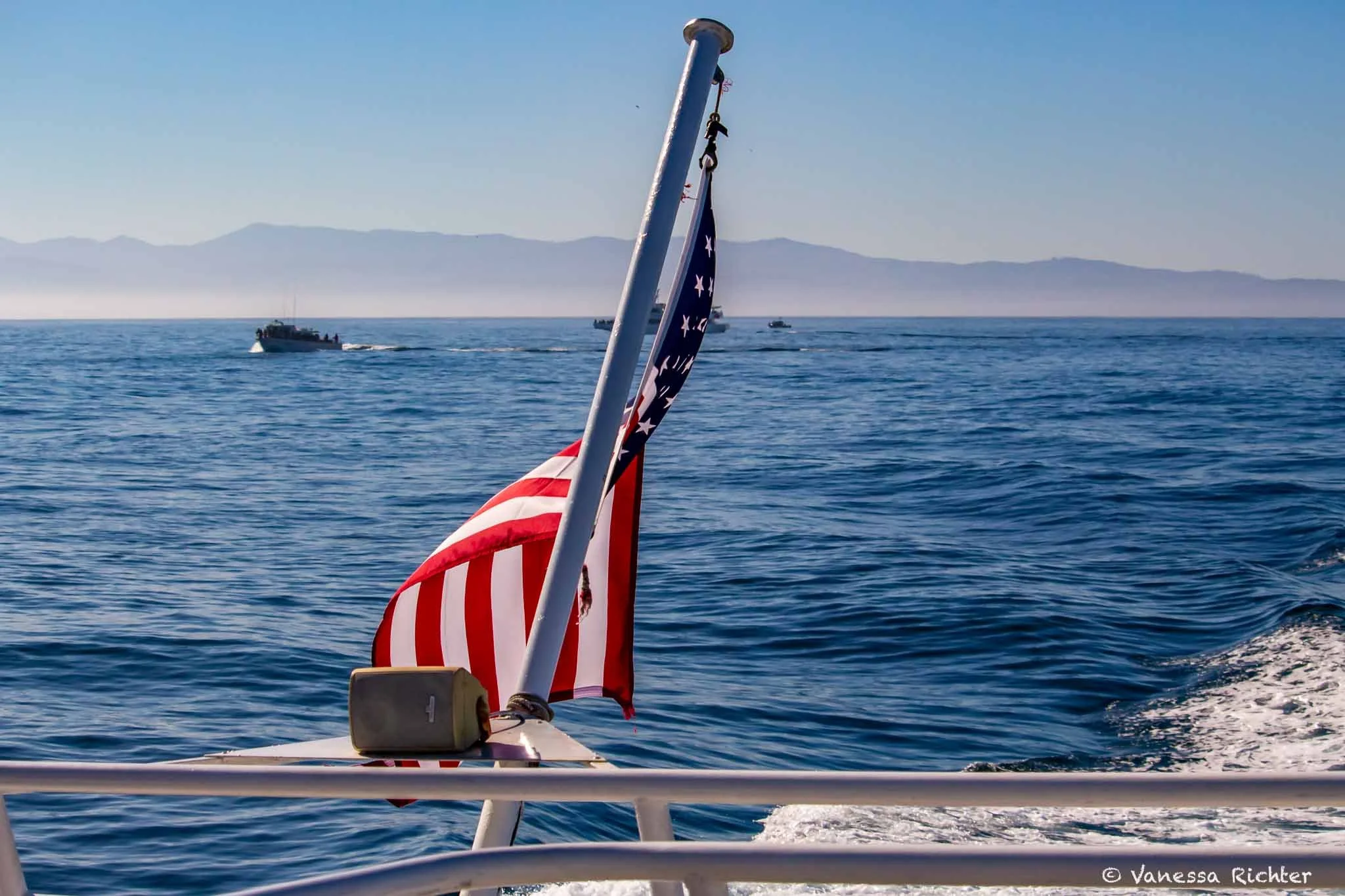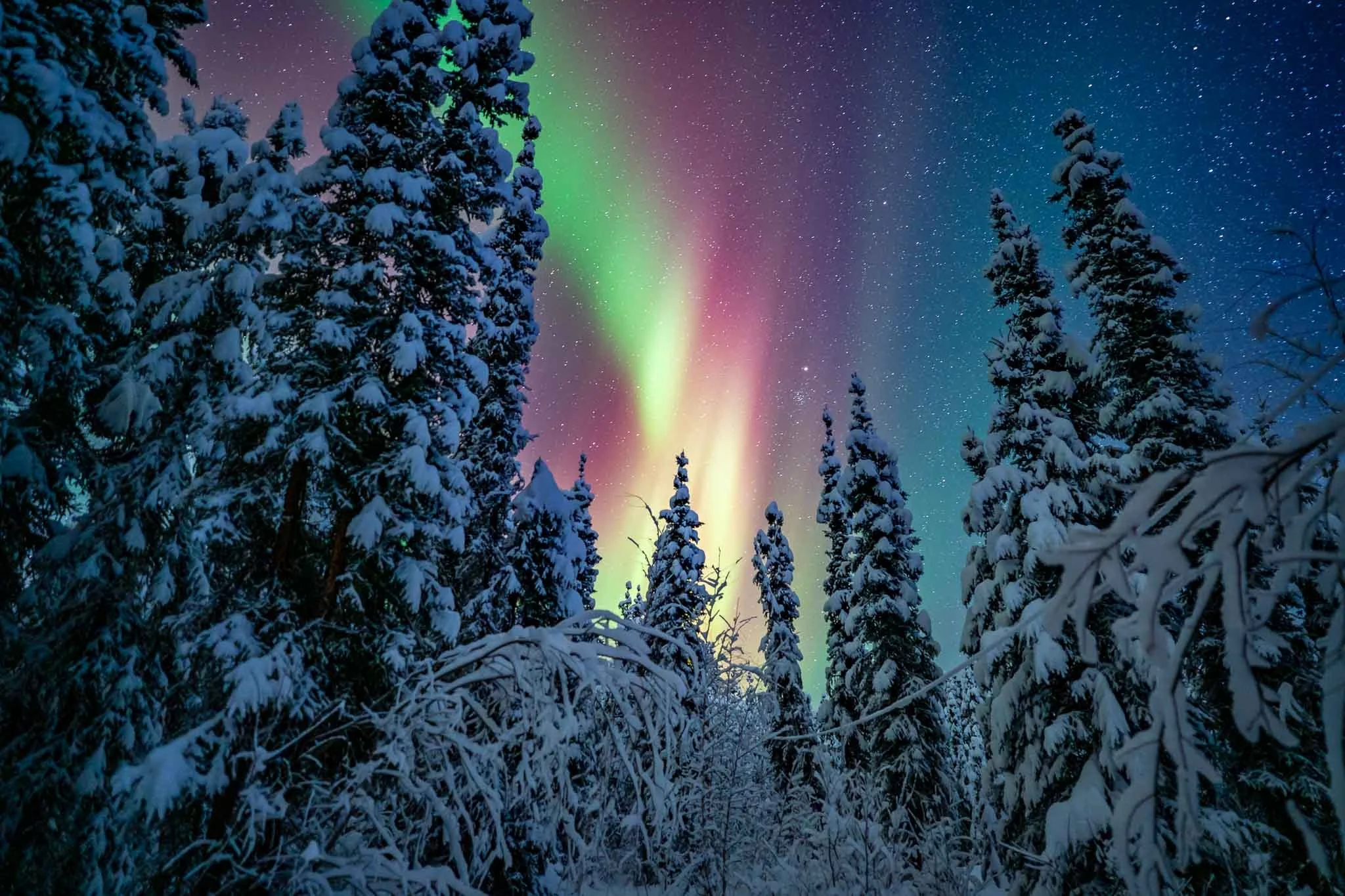Whale-Watching in Monterey Bay: A True Story and Practical Guide for Your Own Trip
Monterey Bay, located on California's central coast, is renowned for its stunning marine life and spectacular whale-watching opportunities.
In this article, I’ll share my whale-watching tour experience, offer insights on why Monterey Bay is such a prime location to spot marine life, provide everything you need to know before venturing out on a shaky boat into the ocean, and share the best tours available.
While every tour is exciting, this one on a beautiful fall day in October was particularly special, as it featured an unexpected 'celebrity': the patchy white-gray orca, Frosty.
Just so you know: This post contains affiliate links, which means I may earn a small commission if you make a purchase through them — at no extra cost to you. I only recommend tours, gear, or services I truly believe in and think you’ll love too. Thanks for supporting my blog!
Table of Contents
In a Nutshell: Why So Many Whales?
In a Nutshell: Why So Many Whales?
Monterey Bay is renowned for its thriving ecosystem, largely due to its nutrient-rich waters, which create a haven for marine life. But why are these waters so teeming with nutrients?
The key lies in Monterey Bay’s significant submarine canyon. The combination of the canyon’s bathymetry (the underwater topography, including depths and terrain relief), local ocean currents, and thermal structure leads to a process known as upwelling.
This process causes deep, cold, nutrient-rich waters to rise to the surface, bringing a surge of nutrients that support a diverse range of marine life, including plankton, krill, and small fish.
As a result, Monterey Bay becomes a vital feeding ground for whales such as humpback, blue, and gray whales, especially during migration seasons. These rich feeding grounds are crucial for their long migrations and reproductive cycles.
For more information, visit the Monterey Bay National Marine Sanctuary.
Into the Blue
My Whale-Watching Story
A smell of salt and fish lingered in the air just as thick as the fog lingered around the bay this morning. The boats in the small port of Monterey rocked smoothly to their sides in the relatively calm water. The water lay flat, almost like a mirror beneath the docks. A calm breeze brushed our cheeks as softly as a feather. While the piers in Monterey get busy later in the day, there were very few people strolling around this early on a Sunday.
While the weather showed its quiet and peaceful face, not all around us stayed silent.
IF IN DOUBT, TAKE THE PILLS!
One of our guides was standing slightly elevated shouting their recommendation toward the crowd of people that were eagerly waiting for the whale watching tour to start.
We highly recommend preparing for seasickness. However, if you do feel unwell, throw-up bags are available on the boat.
Since the small vessels are at the mercy of the wild and relentless Pacific Ocean, seasickness is a real and common issue on these boat tours—even on the bay, it can get rough at times. As I sometimes get car sick on windy roads, I came prepared.
At least, I thought I did at this point.
Reluctant to buy the “chemical” pills, I opted for the ginger-based ones after finding reviews suggesting they were as effective as the drowsy-inducing options. Dutifully, I took them half an hour before the expected start of the tour.
Even though I had seen whale spouts from the shore and watched dolphins swimming beneath the Golden Gate Bridge in the past, this was my first dedicated whale-watching tour. I was excited to potentially observe them up close. Filled with anticipation for a fantastic experience and no ill feelings, we boarded the boat with a crowd of people all eager to see some whales.
The fog creates a mystical atmosphere on Monterey Bay this October morning.
After gathering the final pieces of information, we were ready to board. We made our way to the upper deck, aiming to get the best overview. The benches on the deck invited people to sit, but the rails along the side of the boat were the better spot. And so we stood there with our gaze on the misty water.
Once everyone was aboard, the boat started to drift away from the port into Monterey Bay, toward the open ocean. Soon after we left, we were already greeted by some sea lions relaxing in the morning sun. Some of them contentedly stretched their heads toward the light, literally looking like the most satisfied creatures under the sun.
The boat quickly moved away from the shore, leaving behind the fog that covered the shoreline like a blanket of cotton candy. The sea remained relatively calm, with the boat gliding smoothly over the waves.
When you're immersed in coastal fog, it’s easy to feel trapped, no matter where you go. Yet, just half a mile—or even less—from any spot on the coast can make all the difference. And so, quicker than anticipated, we found ourselves enjoying the blue sky above and the even bluer ocean beneath, stroked by sunlight.
Looking back to the shoreline, the fog blanketed the coast in a thick, misty layer.
Staring at the glaring ocean waters, trying to spot wildlife in the blue endlessness, time passed without any sense of how much had gone by. We were still heading away from the shore, and the air was mostly filled with the rattling of the boat engine. I had read that humpback whale sightings were the most common, so at this point, my mind was set on seeing these beautiful giants.
Suddenly, the familiar, steady rattling was interrupted by some higher-pitched and chaotic sounds. The rattling stopped while the higher-pitched frequencies increased. Excitement grew on our boat. The captain of the boat had turned off the engine. Contrary to its passengers, it lay still in the blue infinity, which was now interrupted by deep black fins waving from the water's surface. The glossy black backs, gleaming in the water, seemed to absorb the bright sunlight. Sprouts of water were blown into the air at quick intervals, sometimes so synchronized that it felt as though they were putting on a show for the amazed onlookers. A pod of orcas was nearby, and they were coming closer. Diving and spouting, several orcas swam toward the boats. The ocean’s surface was so smooth, and the orcas came so close that you could even see their white bellies below the water's surface. I noticed one had a calf with it, swimming closely beside its mother.
One of the orcas approached another tour boat closely, as if checking out the passengers who were standing at the rail, excited to witness this. What I couldn’t see at that moment—but the guide had already spotted—was a killer whale among the group that was very distinct from its peers. It was well known, apparently, but hadn’t been seen in a long time. Its name was Frosty.



After a while, the orcas moved on, and no other whales appeared at our spot, so we decided to move on as well.
Just as we were settling into the calm, there was sudden movement again. This time, it was a single animal, much larger than an orca: a humpback whale, slapping its tail on the water and occasionally surfacing with its broad back. It didn’t seem to be feeding, though, as its head—usually visible when lunging for fish—remained underwater the entire time it stayed near the boat.
A humpback whale is holding its tail above the water, slapping it in the air.
If that wasn’t mesmerizing enough, the show wasn’t over yet. The orcas came back, and this time, I saw Frosty too. There was no doubt about it when I saw the whale—it truly lived up to its name.
Frosty was harder to spot in the sunlight, as most of its body reflected the rays of sunshine intensely. Its head and dorsal fin stood out as gray, much darker than the rest of its body, but still far from the deep black of its peers. Its back wasn’t entirely white but very light in color, with patchy gray spots.
Frosty, a rare white and gray killer whale, is swimming with a group of orcas after being unseen for a while.
It was all so exciting, and I couldn’t take my eyes off either the binoculars or my telephoto lens. But when the activity calmed down, I realized something wasn’t quite right with my stomach. In fact, it was already feeling pretty unpleasant. I thought it wouldn’t hurt to take another seasickness pill and desperately hoped the feeling in my gut would go away soon.
Well—my hopes were not answered—the feeling didn’t go away at all. Since the movements were less intense on the lower deck, I stumbled down the stairs and held on to the railing at the very back, where the motion was supposed to be gentler. Without needing to say anything, a crew member handed me one of the vomit bags, which I had already seen given to another guest, a boy who didn’t seem well either. I leaned over the back, watching the splashing water as the boat headed back toward Monterey. As the boat accelerated, I almost felt fine, but then—just as whales appeared in sight, sparking more excitement—the boat stopped, leaving us at the mercy of the waves, rocking up and down.
That was all my stomach could take. As abruptly as the boat stopped, my stomach emptied into the bag. This went on for quite a while. People were excited to see more whales, while I desperately hoped we could stop the stop-and-go routine. Eventually, I think there just wasn’t anything left inside me.
While this part of the experience was certainly unpleasant — seeing orcas, including Frosty, and humpback whales up close made up for all the nausea caused by the choppy ocean. When I recall the experience now, I can still hear the sounds of the orca pod swimming closely together, lingering in the back of my mind.
So, would I go on a whale-watching tour again and risk the same queasiness?
Without a doubt!
In a Nutshell: Orcas (Killer Whales)
Orca Classification & Name Origin
Orcas are the largest members of the dolphin family.
The name killer whale was given to them by ancient sailors who observed groups of orcas hunting and preying on larger whale species.
Behavior
Orcas are highly intelligent and able to hunt strategically in groups.
Orcas living in different locations have their own culture, meaning they have, for example, different hunting techniques and feeding habits. These different groups of orcas are called ecotypes.
When orcas sleep, they only close one eye as only half of their brain is actually asleep while the other half stays alert. This allows them to breathe (which they can only do consciously, in contrast to humans) as well as look out for dangers in their environment.
Fascinating Fact
Orcas are among only three species where females live longer than they are able to reproduce, the other two being humans and short-finned pilot whales.
Frosty: the (partially) White Killer Whale
Frosty is believed to have a rare condition called leucism, which causes a partial loss of pigmentation in animals. Unlike albinism, which is a genetic mutation that blocks melanin production and results in completely white skin and pink or red eyes, leucism causes a more patchy appearance. Some experts suggest Frosty may also have Chediak-Higashi Syndrome, a genetic disorder that affects pigmentation.
For more information on Frosty, check out this news article, and for general information on orcas, visit this link.
Know Before You Go
Seasickness
- Come prepared for seasickness, and consider bringing different types of medication if you’re unsure what works best for you.
- I took ginger-based pills before and during the trip, which supposedly work well for many people, but they didn’t work for me—so bring alternatives in case something doesn’t go as expected.
Binoculars & Photographing Whales
- Bring binoculars, and if you intend to take photos, a telephoto lens to get a closer look at the whales, which may be some distance from the boat (though some do get close—the orcas weren’t shy and even swam beneath our boat).
- Be cautious when using binoculars or telephoto lenses excessively while the boat is moving, as this can worsen motion sickness.
Best Time
Whale watching in Monterey Bay is exceptional year-round, with peak times during migration seasons:
- Humpback whales can be seen year-round, with the peak season in summer and fall.
- Orcas are spotted year-round in smaller, transient groups. They are more frequently seen during spring and fall, but occasionally appear at other times to hunt marine mammals.
- Gray whales migrate along the coast from December to April. Unlikely to be seen outside of these months.
- Blue whales, the largest mammals on Earth, are commonly sighted from June to October and are unlikely to be seen at other times of year.
The Monterey Bay National Marine Sanctuary provides further information on the whales and their migration cycles.
Note: Even though chances to spot whales are generally great in Monterey Bay, there is no guarantee of seeing them, as these are wild animals that don’t follow the schedule of a whale-watching tour.
Choose A Tour
There are many tour providers to choose from that venture out onto Monterey Bay, departing from various locations such as Monterey or Moss Landing. Regarding your chances of seeing whales, I don’t think it matters much which one you choose — we started in Monterey, and the tour providers all seemed to visit similar spots. Also, whales are wild animals, so you may or may not get lucky on any given day. To make the choice easier for you, here is a favorite option:
Recommendation: Discovery Whale Watch
Discovery Whale Watch offers 3- or 4-hour tours from Monterey and consistently earns excellent reviews. Each tour is narrated by marine biologists or naturalists. Check availability and book your spot below.
More Choices Below
Join the Adventure
Latest on the Blog
Search
📌 Pin for later











I’m the face, writer, and photographer behind Venture Beyond the Picture.
You’re in the right place if you’re looking for nature-focused travel guides, real tales from the trails, and photography that celebrates wild landscapes, fascinating wildlife, and the quiet beauty of nature.
I hope what you find here helps you plan your adventures across the Western U.S., capture the outdoors through your own lens, and spark new inspiration.